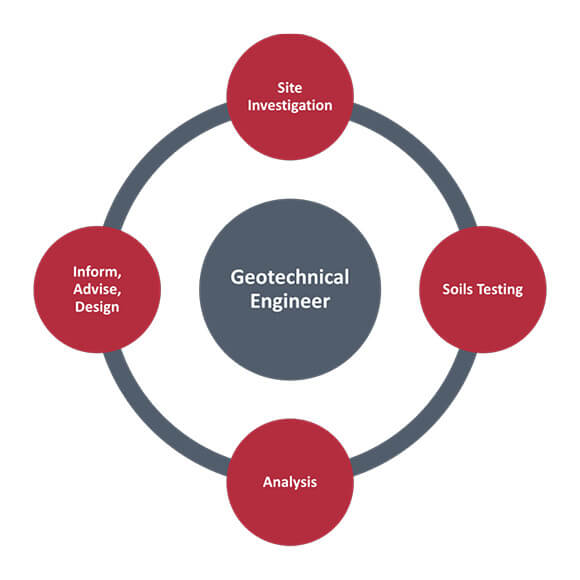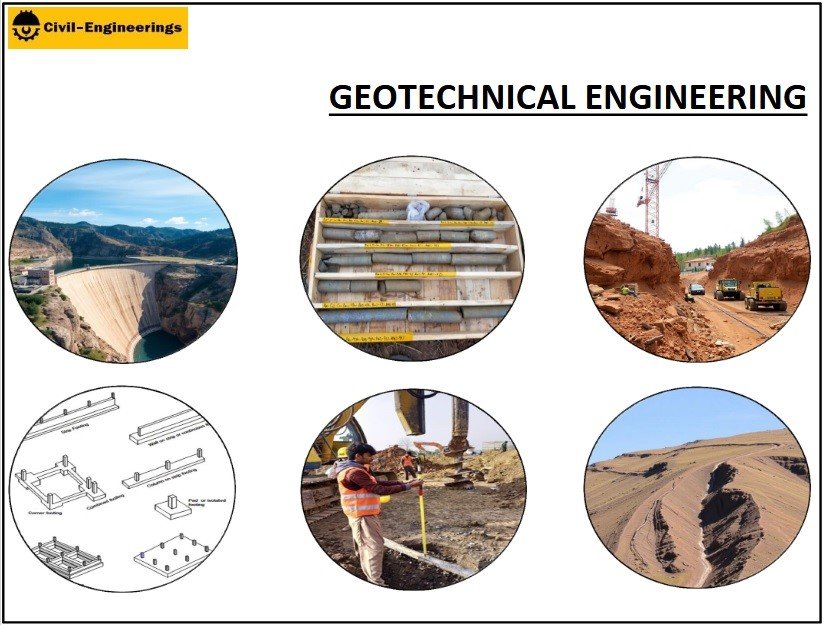Not known Facts About Geotechnical Engineering For Construction Projects
Not known Facts About Geotechnical Engineering For Construction Projects
Blog Article
The Ultimate Guide To Geotechnical Engineering For Construction Projects
Table of ContentsThe Ultimate Guide To Geotechnical Engineering For Construction ProjectsNot known Incorrect Statements About Geotechnical Engineering For Construction Projects Geotechnical Engineering For Construction Projects - QuestionsFascination About Geotechnical Engineering For Construction ProjectsSome Known Factual Statements About Geotechnical Engineering For Construction Projects All about Geotechnical Engineering For Construction ProjectsThe Best Guide To Geotechnical Engineering For Construction ProjectsGeotechnical Engineering For Construction Projects Fundamentals Explained
Corresponding with this enhanced intricacy comes geological and ecological factors that affect the layout of the foundation, which is perhaps the most fundamental part of any type of development. People need to trust that structures, bridges, and streets will stand the test of time. A Geotechnical engineer recommends on just how a structure can best be sustained providing its unique situations What's hidden listed below the surface of the ground is most likely the most crucial item of information that a Geotechnical Engineer is after.These samples are after that evaluated by the lab to identify soil structure (Geotechnical Engineering for Construction Projects). The breakdown of sand, silt, clay, and various other products present in the soil, assists the designer determine what distinct qualities the site has and what the implications of those may be. Naturally dirt composition is just one examination that can be performed on examples
Excitement About Geotechnical Engineering For Construction Projects
Based upon these tests, there may be a lot more soil borings that are pierced, or the designer might have adequate info from the preliminary examinations to make a suggestion to the client on just how finest to wage their job. Results are typically reported via borings logs which show the soil composition and characteristics at a selection of depths.
Geotechnical designers are in charge of recognizing the properties of natural deposits and using this expertise to create secure, cost-efficient layouts for building and construction tasks. It is a crucial part of any type of civil design job, as it is utilized to establish the viability of a website for building and to make sure the structure's safety and security.
This includes performing lab tests on the samples and using geophysical methods such as seismic refraction and electric resistivity surveys. This information is used to assess the website's viability for construction and to establish the type of structure that must be utilized. Geotechnical engineering assesses soil conditions, determines possible hazards, selects an appropriate foundation system for the proposed structure, and figures out the most effective structure design for a provided task.
Geotechnical Engineering For Construction Projects - The Facts
The structure might come to be unsteady or collapse without correct soil stabilisation, bring about pricey repair services and prospective injury. The stablizing process includes utilizing different techniques to boost the stability of the soil, such as compaction, grouting, and the enhancement of reinforcing products. Without soil stablizing, the dangers related to building projects would be much higher, and the outcomes much less reputable.
Geotechnical engineers conduct site investigations to evaluate the soil's residential properties and identify potential threats. They create and implement dirt stabilization strategies, such as adding concrete, lime, or various other supporting agents, to enhance the dirt's toughness and stability.
Get This Report on Geotechnical Engineering For Construction Projects
Geotechnical engineers are vital in assisting to make certain that dirt stablizing is done properly to make sure that the structure is risk-free and safe. Geotechnical engineering is likewise made use of to evaluate soil conditions and identify possible dangers. This consists of examining prospective flooding, landslides, and various other all-natural disasters that can influence the foundation.
Geotechnical designers use this knowledge to perform site investigations, dirt, and rock testing, and to translate the outcomes to determine the ideal style parameters for a job. This information is used to guarantee that the foundation, preserving walls, slopes, and various other frameworks improved or within the subsurface materials have sufficient stability and resistance to external tons, such as earthquakes, wind, and water.
These frameworks call for a deep understanding of the behavior of the subsurface products, as well as the capability to manage the impact of excavation and building on the surrounding atmosphere. Geotechnical engineers check out this site use their experience to determine the proper design criteria for these frameworks, such as the shapes and size of the passage, the stamina of the sustaining rock, and the kind and amount of assistance needed.
Along with the style and building and construction of structures, geotechnical design also plays a vital role in the rehabilitation and maintenance of existing structures. As structures age, they might experience deterioration or other troubles that impact their stability and efficiency. Geotechnical designers utilize their knowledge to assess the condition of these frameworks, determine the reasons for the troubles, and establish methods to address them.
The Geotechnical Engineering For Construction Projects PDFs
In this post, I will discuss the function of geotechnical design and the kinds of troubles geotechnical engineers address. Geotechnical engineers (geotechs) are included in virtually every sort of civil design job. Besides, every structure is supported by dirt or rock unless it is floating, flying, or dropping down.
Geotechs are typically most entailed at the start of a why not find out more task. Geotechnical Engineering for Construction Projects. A few of the jobs that a geotech may be accountable for are checking out subsurface conditions, establishing needed laboratory screening of dirt and rock, translating the subsurface exploration outcomes, and composing reports that record the website conditions and give referrals for structures, fill specifications, incline stability, and so on
It is not unusual for geotechnical designers to concentrate on just one of the areas noted above and examine that subject their entire occupation. Geotechnical design is an essential facet of any civil engineering task. Despite how excellent a structure is developed, it will not be terrific for long if the foundation is inadequate.
All about Geotechnical Engineering For Construction Projects

Frequently, points that might not appear important turn out to be important years later on when concerns develop. One last point to remember: geotechnical design is wed to geology. Regardless of how fantastic your engineering proficiency is, if something important is missed out on in the geologic characterization at a website, your knowledge may not conserve you.
He appreciates creeping around on any kind of landslide he can discover and investing time fly fishing on the water. I hope you appreciated this week's message by guest author Jese Vance. I hope you'll join us.
The smart Trick of Geotechnical Engineering For Construction Projects That Nobody is Talking About

It is essential to create the foundation to hold up against all-natural and manufactured lots. Lots can be vertical or lateral. It is essential see post to recognize the dirt problem prior to developing the type and deepness of foundation required for the structure. In order to recognize the subsurface dirt problem, a geotechnical investigation is needed.
Top Guidelines Of Geotechnical Engineering For Construction Projects
Once the test results come, the Geotechnical Engineer analyses the record, which outlines the soil and rock properties groundwater condition and the linked risks. The sort of foundation required to build the framework is after that determined. Based upon the suggestion of the Geotechnical Designer, the architectural designer then makes the structure.
Report this page